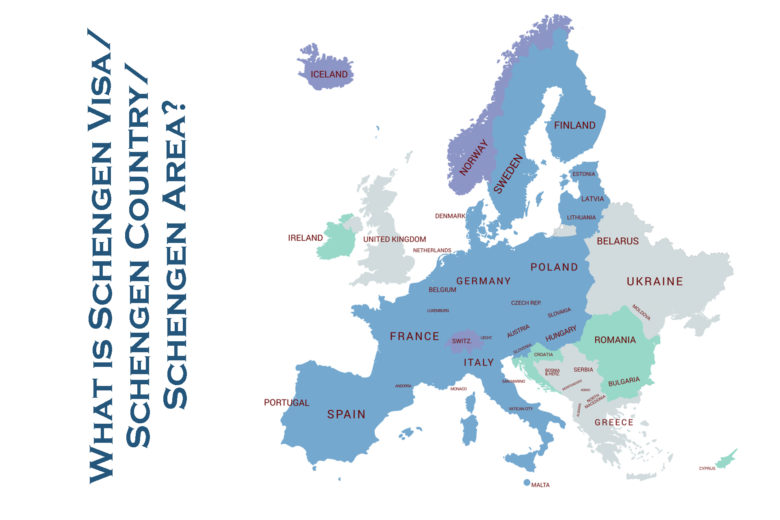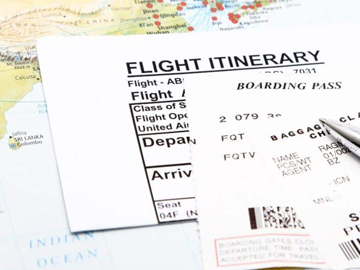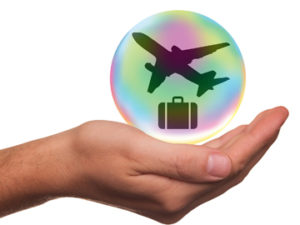The Birth of Schengen Area
On June 14, 1985, Government representatives of five European countries came together in a small wine-making village located along the banks of the River Moselle in south-east Luxembourg. The agenda of the meeting was straightforward – to simplify cross-border transit for people, goods and vehicles so that the need for heavy documentation and security checks could be reduced.
The governments that initiated this geographical transformation were those of Luxembourg, West Germany, Belgium, France and Netherlands. Overnight, the quaint little town where this meeting was conducted became the limelight of the European Union. It was called Schengen – a name that blazed across the EU to cover the entire region – and exists to this day.
Since that day in 1985, more and more countries acknowledged the advantages of this pact, and signed the Schengen Agreement. Today, the Schengen Area comprises 26 countries, as well as several other micro nations, from EU and non-EU regions. These are Austria, Belgium, Czech Republic, Denmark, Estonia, Finland, France, Germany, Greece, Hungary, Iceland, Italy, Latvia, Lithuania, Luxembourg, Malta, Netherlands, Norway, Poland, Portugal, Slovakia, Slovenia, Spain, Sweden, and Switzerland, with Liechenstein being the last to follow suit in 2011.
Schengen Visa
Ten years later in 1995, this freedom of movement of people and goods opened up to the rest of the world. And that meant good news for travelers and businesses! Now, people did not have to restrict themselves to one visa for one EU country. Instead, they could opt for a consolidated Schengen Visa and thereby move freely across all 26 countries and micro nations for work, pleasure, or studies. This was because the Schengen Agreement had reduced a large collection of countries and territories into one gigantic state.
But there are some countries
which are exempted from Schengen Visa restrictions. Yes,
indeed! Citizens of the following countries do not require a Schengen Visa to enter the Schengen Area for business or pleasure.
However, there are other restrictions, which they must adhere to. They cannot
work or study in the country they are visiting as well as in the entire Schengen Area. Their stay also should be equal to or less than 90 days for
every 6 months, regardless of the reason or purpose of visit.
- Albania
- Andorra
- Antigua and Barbuda
- Argentina
- Australia
- Bahamas
- Barbados
- Bosnia and Herzegovina`
- Brazil
- Brunei
- Canada
- Chile
- Colombia
- Costa Rica
- Dominica
- El Salvador
- Georgia
- Grenada
- Guatemala
- Holy See (Vatican City State)
- Honduras
- Hong Kong S.A.R Israel
- Japan
- Kiribati
- Macao S.A.R
- Malaysia
- Marshall Islands
- Mauritius
- Mexico
- Micronesia
- Moldova
- Monaco
- Montenegro
- Nauru
- New Zealand
- Nicaragua
- North Macedonia
- Palau
- Panama
- Paraguay
- Peru
- Saint Kitts and Nevis
- Saint Lucia
- Saint Vincent
- Samoa
- Serbia
- Seychelles
- Singapore
- Solomon Islands
- South Korea
- Taiwan
- Timor Leste
- Tonga
- Trinidad and Tobago
- Tuvalu
- Ukraine
- United Arab Emirates
- United States of America
- Uruguay
- Vanuatu
- Venezuela
So, naturally, citizens of the remaining countries are those which require a Schengen Visa to visit the Schengen Area. These include
| Afghanistan | Gabon | Oman | Algeria | Gambia | Pakistan |
| Angola | Ghana | Papua New Guinea | Armenia | Guinea | Palestinian Authority |
| Azerbaijan | Guinea-Bissau | Philippines | Bahrain | Guyana | Qatar |
| Bangladesh | Haiti | Russia | Belarus | India | Rwanda |
| Belize | Indonesia | Sao Tome And Principe | Benin | Iran | Saudi Arabia |
| Bhutan | Iraq | Senegal | Bolivia | Jamaica | Sierra Leone |
| Botswana | Jordan | Somalia | Burkina Faso | Kazakhstan | South Africa |
| Burma/Myanmar | Kenya | South Sudan | Burundi | Kosovo | Sri Lanka |
| Cambodia | Kuwait | Sudan | Cameroon | Kyrgyzstan | Suriname |
| Cape Verde | Laos | Swaziland | Central African Republic | Lebanon | Syria |
| Chad | Lesotho | Tajikistan | China | Liberia | Tanzania |
| Comoros | Libya | Thailand | Congo | Madagascar | Timor-Leste |
| Cote D’ivoire | Malawi | Togo | Cuba | Maldives | Tonga |
| Dem. Rep. Of Congo | Mali | Tunisia | Djibouti | Mauritania | Turkey |
| Dominican Republic | Mongolia | Turkmenistan | Ecuador | Morocco | Uganda |
| Egypt | Mozambique | Uzbekistan | Equatorial Guinea | Namibia | Vietnam |
| Eritrea | Nepal | Yemen | Ethiopia | Niger | Zambia |
| Fiji | Nigeria | Zimbabwe | North Korea | Northern Mariana’s |
From this set of countries, a few have been further earmarked for Airport Transit Visa (ATV). An ATV is issued when travelers need to board connecting flights and therefore change airplanes in a Schengen country to reach their final destination someplace else. A majority of countries where citizens are required to possess a Schengen Visa are exempted from having ATVs. However, some are not. These include:
- Afghanistan
- Bangladesh
- Congo (Drc)
- Eritrea
- Ethiopia
- Ghana
- Iran
- Iraq
- Nigeria
- Pakistan
- Somalia
- Sri Lanka
Schengen Visas based on Purpose of Travel and Number of Entries
While obtaining a Schengen Visa might give you access to all 26 Schengen Countries, the purpose of the visit must be clearly described at the time of application. The reason why you want to avail a Schengen Visa will give you access to and at the same time restrict you from several inclusions and exclusions which you must adhere to during your travel. This includes duration of Visa validity, cost, documentation, and other dos and don’ts. In fact, if you obtain your Schengen Visa for one reason and get involved in completely different set of activities in the Schengen Area, the government retains absolute authority to take strict legal and disciplinary action against such you. So, it is best to maintain utmost transparency when applying for a visa and stick to the purpose of visit you have declared.
You can apply for a Schengen Visa for any of the following purposes.
- Airport transit or seaport transit for boarding a connecting flight or ship from the Schengen country.
- Tourism, one of the most popular reasons for Schengen Visa applications from all over the world.
- Visiting family and friends who are legal residents / citizens of the same or different Schengen countries.
- Business work such as collaboration with other companies, meeting clients, etc.
- Official work, such as participation an international conference/seminar, etc.
- Access to advanced medical treatment which is not available in your country of residence.
- Pursuing academic programs, which are not available in your country of residence.
- Arts, Culture and Entertainment Crews participating in academic study tours, film-making, religious events, etc.
In case the purpose of your visit does not fall in any of the categories mentioned above, the Schengen Visa Application Form has a provision to indicate this as well.
When choosing a Schengen Visa type, you can also request for the number of valid entries into the Schengen Area. The number of entries you can make using the issued Visa is indicated by the “Number of Entries” tag. These are categorized as:
- Single-Entry Visa
- Double-Entry Visa
- Multiple-Entry Visa
Depending upon the entry status, you can visit the Schengen Area once, twice, or multiple times within the stipulated visa validity period. The Multiple-Entry Visa type is particularly recommended if you frequently travel to the Schengen Area for work, visit, or other purposes.
Other Types of Schengen Visas
While Schengen Visas typically provide access to all 26 countries within the Schengen Area, you might be found eligible for a Limited Territorial Validity Visa, which allows travel only to those countries mentioned in the Visa Stamp.
For visitors who need to stay in a Schengen country long-term can also avail a ‘D’ Category National Visa. These visas are most sought after by students and working professionals who need to spend considerable time in the Schengen country to fulfill their purpose of visit.
From all that has been revealed about the Schengen Area, the impact of the Schengen Agreement can be felt strongly when we think about traveling and staying in any of its member countries. While the laws and guidelines might seem stringent and confusing for first-time travelers, they have actually become more streamlined and impartial than ever before. This travel transparency has definitely played a vital role in opening up the EU to the world.






